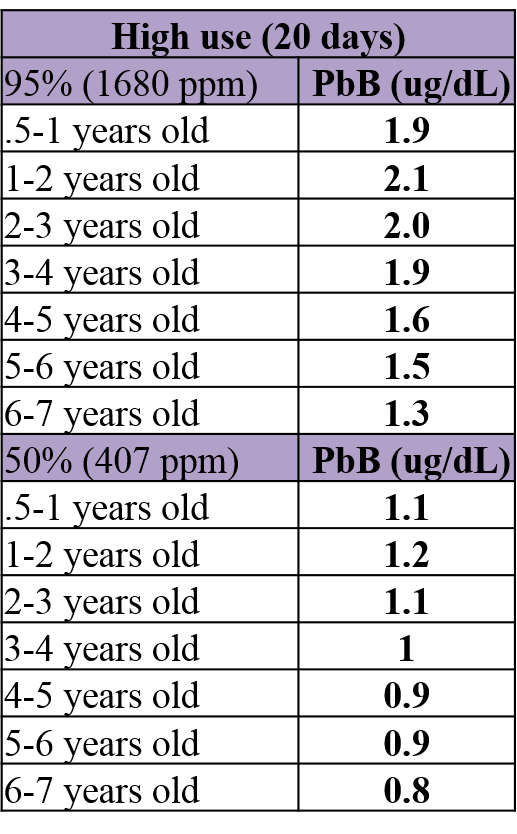Human Health and Ecological Risk Assessment
-
Risk Assessment
Based on:
- Toxicity Assessment
- Exposure Assessment
- Magnitude
- Frequency
- Duration
- Route Exposure Assumptions
-
Human Health Risk Assessment
Due to the unique nature of lead, reference doses and hazard indexes are not utilized for human health risk assessments. This is due to the fact that detrimental effects can be seen at very low blood lead levels (PbB) and so no dose is completely safe. Instead, models are used to approximate the blood lead levels in adults and children, which are then compared to allowable limits.
Soil lead concentrations found from the data analysis were then put into the Adult Blood Lead Model and the IEUBK model for children to approximate expected blood lead levels due to various exposure scenarios
Note:These exposure scenarios where selected based off of what the team observed while sampling and the distance the site is to the city of Yuma. The Exposure Frequency is how many days per year a person in that scenario would be around the site. Calculations were made using the 95th and 50th percentiles of lead concentration from the grid sampling.
Children:
According to the EPA, there are no safe blood lead levels for children, but a reference limit of 5 mg lead/dl blood is used.
Risk Levels for Children (Average Use vs. High Use)
Adult:
The reference blood lead level for adults is 10ug/dl.
-
Ecological Risk Assessment
The migration of mine tailings surrounding the Red Cloud Mine pose potential risks to ecological factors, such as flora and fauna, which exist in these areas. During the sampling investigation, field notes were recorded to document the presence of flora and fauna in Black Rock Wash as well as the surrounding landscape. The principal plant species of concern in this investigation include: the saghorn cactus, various desert grasses, and shrubs. Recorded fauna included: the desert cottontail, lizards, coyote, and desert big horn sheep.
Schematic of Exposure Pathways for Species
Hazard Risk Levels for Species
According to the research hazard risk level for plants, at this contamination level, the Saghorn cactus, desert grasses, and shrubs will experience minimal risk. However, if these plants are located near hot spots, in which contamination levels average 1679.65 ppm these plants species will experience severe risk to their ecological health.
Note: Ecological risk was evaluated based on multiple sources, assumed averages for body weights, soil ingestion, food ingestion rate, etc. These risk evaluations are estimates and will vary greatly depending on varying body weights and ingestion rates.
Based on the calculations, the desert cottontail (5.05 mg of lead/ kilogram of body weight /day) and coyote (5.63 mg of lead/ kilogram of body weight /day)are experiencing the largest ecological risk. Their risk level is well within the 2-8 mg of lead per kilogram of body weight per day that can cause death in animals. The basis of this risk however, is prolonged exposure over an extended period of time. The cottontail rabbit will be most at risk because it has a smaller home range and will be exposed over a longer period of time. Although the coyote will also be exposed, its range is must greater and may be exposed less frequently to higher contaminated soil levels. All of these calculations were based on the average soil contamination lead level of 401 ppm that was recorded for Black Rock Wash.
Last Updated: 5/6/16




